Stölpchensee | JUNE 9
In 1935, the Nazi party press had orchestrated a campaign to exclude Jews from public swimming pools, citing “unpleasant incidents” or warning the public of the “danger” allegedly posed by Jews. Suddenly, signs inscribed with texts like “Jews are not permitted access to this facility” were put up almost everywhere. Stölpchensee, one of the lakes just outside Berlin, was the last public bathing spot to which Berlin Jews had access. Fritz and Friedel F. were married and lived in Berlin, where Fritz owned a lamp store. In June of 1938, their weekend cottage at Stölpchensee was still a family escape from the city and harassment.
Unbearable despair | JUNE 7
The Anschluss, Austria’s annexation by Nazi Germany in March 1938, precipitated a wave of anti-Jewish violence. Emboldened by their new status and by the utter defenselessness of the Jewish population, Nazis and their sympathizers entered Jewish homes and seized whatever property they liked. Jewish-run businesses were ransacked or destroyed, and Jews of all ages were forced to carry out the demeaning task of scrubbing streets to remove political slogans under the eyes of jeering onlookers. With no protection to be expected from police, a feeling of utter abandonment and hopelessness drove many Jews to take their own lives. In the first two months after the Anschluss, 218 Jews escaped the state-sanctioned cruelty by taking their own lives. The JTA’s June 7 dispatch lists the most recent suicides—including that of a family of four—and deaths at the Dachau concentration camp.
No Jews allowed | JUNE 2
In 19th century, the Central Association of German Citizens of Jewish Faith began to publish lists of spas and hotels at which Jewish guests were not welcome. Some resorts even advertised themselves as judenfrei (“free of Jews”). After World War I, the phenomenon known as Bäder-Antisemitismus (“spa antisemitism”) increased, and with the Nazi rise to power in 1933, it became official policy. By 1935, Jews had been effectively banned from the Northern German bathing resorts, and from spas in the interior of the country by 1937. It was not until the Anschluss in March 1938 that Jews were pushed out of Austrian spas as well. Bad Ischl and other locations in the Salzkammergut region were particularly popular with Jews, to the point that in 1922, the Austrian-Jewish writer Hugo Bettauer quipped that “it caused a stir when people suspected of being Aryans showed up.” In a notice from June 2, The Jewish Telegraphic Agency reports that at the behest of the Nazi commissioner in charge, Jews were to be “segregated in Jewish hotels and pensions” and were no longer permitted to attend cultural events in Bad Ischl.
The Jewish Hospital in Hamburg | MAY 29
Depicted here is the facade of the Jewish Hospital in Hamburg. The photograph is part of an album preceded by the above inscription dated May 29, 1938. The hospital was endowed by merchant and banker Salomon Heine, also known as the “Rothschild of Hamburg,” in memory of his late wife Betty and inaugurated in 1843. The poet Heinrich Heine, Salomon’s nephew and beneficiary, honored the occasion with his poem Das neue israelitische Hospital zu Hamburg, in which he called it “A hospital for poor, sick Jews, for human beings who are thrice miserable, afflicted with three vicious ailments, with poverty, bodily pain, and Jewishness!” Even though the Nazi regime had been undermining the hospital’s finances since 1933, it had withstood these measures and was still able to take care of its patients in May 1938.
Conflict in Palestine | MAY 19
Nothing in this May 19 Jewish Telegraphic Agency report from its Jerusalem correspondent could provide German or Austrian Jews eager to leave for safer shores with the hope that life in Palestine would grant them peace and quiet. Between Arab attacks on Jewish workers or Jewish-built infrastructure and labor unrest among unemployed Jews, the only reassuring aspect of Palestine was its distance from the epicenter of Nazi activity. Since the beginning of the Great Revolt, Arabs, British, and Jews in Palestine had been embroiled in an often violent conflict—scarcely an attraction for weary Central-European Jews eager for peace.
Opening night | MAY 14
On May 14, 1938, American moviegoers lined up to see Errol Flynn in his latest swashbuckling adventure produced by Warner Brothers. Flynn’s turn as Robin Hood was especially thrilling thanks to the lush film score by an Austrian Jew whose music was no longer welcome at home. Although a citizen and resident of Austria, composer and conductor Erich Wolfgang Korngold felt the effects of Nazi cultural policy soon after 1933, since he had often worked in Germany. In this climate, he did not have to think twice about Max Reinhardt’s invitation in 1934 to compose the score for his Hollywood production of “A Midsummer Night’s Dream.” Korngold’s symphonic film scores broke new ground and established the typical “Hollywood sound.” In 1937, while on an extensive visit to Vienna to complete the orchestration of his opera “Die Kathrin,” he received an invitation from Warner Brothers to compose the score for “The Adventures of Robin Hood.” This assignment spared him the turmoil of the Anschluss. He returned to the US well before March 12, 1938. This photograph shows what appears to be a recording session for the Robin Hood score. The actor in the photograph is Basil Rathbone, who played Robin Hood’s nemesis, Sir Guy of Gisbourne. Korngold won an Academy Award for his compelling score—his second after “Anthony Adverse” (1937).
Stuck in No Man’s Land | MAY 10
The annexation of Austria by Nazi Germany in March 1938 had brought an abrupt end to 1,000 years of Jewish life in the Burgenland region, Austria’s easternmost state. The expulsion of the small Jewish population, carried out by the SS, local Nazi officials, and civilian collaborators, commenced immediately. This article by the Jewish Telegraphic Agency reports on the League of Nations’ intervention on behalf of 56 expellees who had ended up in “no man’s land” in the border area between Austria and Yugoslavia. The League’s High Commissioner for German Refugees requested the temporary accommodation of the displaced persons by Yugoslavia, to be followed by permanent resettlement elsewhere.
Abortion and politics | MAY 9
On May 9, the Ärztegruppe of the German-Jewish Club (an informal association of physicians within the city’s main German émigré organization) in New York offered a lecture on the topic of abortion. During the Weimar Republic, repeated efforts had been made to abolish or at least reform the anti-abortion paragraph (§218). Its opponents pointed out that it put the working class at a disadvantage, since poverty was the chief motivation for abortion. In 1926, a member of the Reichstag representing a coalition of three right-wing parties, including the NSDAP, proposed legalizing abortion for Jews only. Under the Nazi regime, which promoted the production of “racially valuable” offspring, abortion was illegal unless it prevented the birth of children considered “undesirable.” In the US, the depression had led to an increased demand for abortion, and by the beginning of the 1930s hundreds of birth control clinics had sprung up. Poverty and the lack of access to qualified practitioners often led to the injury or death of pregnant women through self-induced miscarriage. The lecturer, Dr. Walter M. Fürst, was a recent arrival from Hamburg.
The best revenge | APRIL 29
A month and a half after the “Anschluss,” Paul Steiner is still incredulous. Everything seems so unbelievable, he writes in his diary, that “even ones own words are becoming astonishing and dubious.” He wonders what the outside world is doing for the Jews in light of German barbarity, especially for the Burgenland Jews, who were brutally expelled right after the “Anschluss” and ended up stranded in totally inadequate shelters while their belongings were appropriated by their former neighbors. Steiner also imagines the “revenge” that Jews will exact, shaming the world with their achievements once they are given the right to self-determination.
Liesl | APRIL 28
During the years of the authoritarian regime installed in Austria in 1934 (“Austrofascism”), the police prison at Rossauer Lände in Vienna (nicknamed “Liesl” by the locals) had already been used as a lockup not only for criminals but also for political dissidents. After the annexation of Austria by Nazi Germany on March 12, 1938 (“Anschluss”), the first 150 Austrians were taken to the Dachau concentration camp from this notorious prison. Some, like Edmund Wachs, were held there in “protective custody,” a convenient tool used by the nazis to rid themselves of Jews and political opponents, since it could be imposed arbitrarily and left the prisoners little or no recourse to legal support. In this postcard, Edmund’s brother, the attorney Dr. Karl Wachs, reassures Edmund that he is doing everything he can to press his case and asks him for patience.
A letter from home | APRIL 19
For Arthur Wolf, a fervent Austrian patriot and veteran of WWI, the Nazi takeover of Austria in March meant the collapse of his world, the loss of his homeland and equal rights. Wolf was the manager of a textile factory in Tannwald (then Czechoslovakia). His Russian-born wife, Maria, had stayed behind in Austria with the couple’s son, Erich (b. 1923). Given recent events, the tone of Maria’s April 19 letter to Arthur is remarkably playful. She marvels about 15 year-old Erich’s poetry, speaks warmly about their mother-son relationship and expresses longing for Arthur, avoiding any obvious references to current events.
A special 70th birthday gift | APRIL 13
Heinrich Stahl, chairman of the Berlin Jewish Community since 1934, was heavily involved in the work of the various Jewish relief organizations, for which there was growing need as Nazism took hold. On April 13, 1938, his 70th birthday, he received a gift from the Ahawah Children’s Home, a photo album which showed the wide range of activities pursued by the charges of this exceptional institution (see March 17). The album included several photographs from the Ahawah’s new branch, which had been opened in Palestine in 1934. A heartfelt warmth and gratitude shine through this rhymed dedication thanking Stahl for his service to the community.
Forgone conclusion | APRIL 10
The entry of German troops into Austria on March 12 had preempted Chancellor Schuschnigg’s planned plebiscite on unification with Germany on March 13. The Nazis rescheduled the referendum for April 10 in conjunction with the first all-German Reichstag elections. Catholic bishops, under the leadership of Archbishop Theodor Innitzer, had issued a “solemn declaration” in which they called upon Catholic voters to cast their ballots in favor of the “Anschluss.” According to official figures, close to 100% of voters affirmed what was already an established fact. The document presented here is a voter ID to be used only by the addressee named on the front page. It explicitly excludes Jews from participating.
Carnival jesters at the passover ball | APRIL 9
Usually the Jewish National Workers Alliance, as the Labor Zionist fraternal order was known, occupied itself with serious matters. Among other things, it strove to strengthen the working class and offered help in cases of economic hardship, illness, or death of its members. In 1911, it had established the first modern insurance system for Jewish workers. On April 9, 1938 it strayed from its core mission and held a Passover Ball in the German-Jewish stronghold of Washington Heights in New York. Among other items, the program featured “Cologne humorists.” German immigrants would have understood that this referred to Cologne carnival jesting, a tradition associated with the Catholic carnival season that dates back to the Middle Ages. The venue was the ballroom of the Paramount Mansion, which also housed several institutions that promoted the interests of German Jewish immigrants.
Recommendation from Karl Bonhoeffer | MARCH 31
Prof. Karl Bonhoeffer, a psychiatrist and neurologist as well as the father of two prominent opponents of the Nazi regime, Klaus and Dietrich Bonhoeffer, taught at Friedrich Wilhelm University in Berlin and was in charge of the Department for Mental and Neurological Diseases at the Charité Hospital. In this letter of recommendation, written in English for use in exile, Bonhoeffer praises the extraordinary achievements of his Jewish colleague, Dr. Herta Seidemann. While his attitude toward certain Nazi programs (such as the forced sterilization of carriers of certain congenital diseases and euthanasia) remains controversial, his efforts on behalf of several Jewish colleagues are indisputable.
No coming back | MARCH 30
In the wake of Austria’s annexation by Nazi Germany, the Polish parliament (“Sejm”), fearing the return of up to 20,000 Polish citizens from Austria, passed a bill according to which Poles who had lived abroad for more than five years were to lose their citizenship. The situation of the Jews had improved somewhat under the Piłsudski government (1926–1935), but after the marshal’s death, especially in the atmosphere created by the “Camp of National Unity” (from 1937 onward), antisemitism was resurgent. Universities applied quotas to Jewish students and introduced “ghetto benches” for them, Jews were held responsible for the Great Depression, Jewish business were boycotted and looted, and hundreds of Jews were physically harmed, some killed.
A second Salzburg? | MARCH 29
The Austrian-born theater and film director Max Reinhardt emigrated to the US in October 1937, accompanied by his wife Helene Thimig, an actress. By introducing technical innovations and elevating the position of the director, Reinhardt played a pivotal role in the development of modern theater. With his production of H. von Hoffmannsthal’s “Jedermann” in 1920, he became one of the co-founders of the Salzburg Festival. Shortly after he settled down in the US, plans emerged to found “another Salzburg” festival in California. This time, he wrote his friend Arturo Toscanini, he would be working “under more favorable climatic and political conditions, and perhaps with greater financial means.” Among his achievements in the US were staging Werfel’s “The Eternal Road” (1937) and founding the Max Reinhardt Workshop for Stage, Screen and Radio, a theater and film academy in Hollywood (1937–1939). He did not think very highly of US audiences.
As far away as possible | MARCH 28
More than two weeks had passed since the Nazi takeover in Austria. The initial shock and disbelief among Jews had given way to despair and panic. Many reacted by seeking information about visa requirements for countries like the United States, Great Britain and Australia, which promised a safe haven and sufficient distance from the dramatic new situation in Austria. Between March 24 and 28, the Australian consulate alone received 6,000 applications for immigration—a number which considerably exceeded the country’s official immigration quota.
Parental Pride | MARCH 27
Wilhelm Hesse was the son of an orthodox business man. He resided in Hamburg with his wife Ruth and his two little daughters, Helen and Eva, whose early years he recorded in diaries that he kept for the children. The entries are interspersed with references to Jewish holidays and photographs of the children. In this entry, he documents proudly and in detail the progress of his daughter Helen, who is not yet five years old at this time. A lawyer with a doctorate, Hesse had been laid off already in April 1933.
Denaturalized | MARCH 26
The passage in July 1933 of a law allowing the government to revoke the citizenship of those naturalized after the end of WWI had given Nazi officials a tool to deprive “undesirables” of their citizenship. The law targeted the Nazis’ political adversaries as well as Jews; 16,000 Eastern European Jews had gained German citizenship between the proclamation of the republic on November 9, 1918 and the Nazi rise to power in January 1933. Among those whose names appear on the expatriation list dated March 26, 1938 are Otto Wilhelm, his wife Katharina and the couple’s three children, residents of Worms and all five of them natives of Germany.
Lost at home | MARCH 25
In another dramatic report from Vienna, the Jewish Telegraphic Agency describes panicked Jews flocking to the US Consulate hoping in vain to receive some kind of support. Especially prominent Jewish citizens faced harassment and arrest by the secret police. Austrian Jewish leaders were forced to inform the police about their activities, while their German counterparts were unable to come to their support due to border restrictions. The situation of thousands of Jewish actors had become so desperate that even the Nazi representative of the Austrian Theater Guild acknowledged it and permitted a campaign in their support.
An ordinary eulogy in a time of immeasurable loss | MARCH 24
A mere 20 years had passed since the end of World War I, during which Dr. Max Kirschner, a Frankfurt physician, had been decorated with the Iron Cross—remarkably, for extending aid to enemy infantrymen. Yet the fact that Kirschner had fought in the War as one of 100,000 German Jews, 12,000 of whom lost their lives, did not in the long run improve his standing with the authorities. In his eulogy for Hedwig Wallach, scion of an old Frankfurt family, he praised the deceased’s quiet devotion to her husband, her lively interest in her children and the quiet bravery with which she had borne her illness.
Soma Morgenstern | MARCH 23
Soma Morgenstern held a doctorate in law, but he preferred making a living as a writer, authoring feuilletons on music and theater. Born in Eastern Galicia and fluent in several languages, including Ukrainian and Yiddish, he chose German for his journalistic and literary endeavors. After his dismissal in 1933 from the Frankurter Zeitung, whose culture correspondent he had been while based in Vienna, he barely managed to stay afloat with occasional journalistic work. The annexation of Austria by Nazi Germany made his situation entirely untenable. He was forced into emigration, leaving behind his wife, a child, and many manuscripts. By March 23 he had made his way to safety in Paris, where he stayed at the Hôtel de la Poste with another famous Galician exile, his old friend, the author Joseph Roth.
Women’s Rights are Human Rights | MARCH 22
Since its founding in 1904, the League of Jewish Women had worked to ensure the dignity and independence of Jewish women and especially to protect them from sexual exploitation by facilitating professional training. By 1938, another issue had come to the fore: emigration. On March 22, 1938, the Group of Professional Women within the League, represented by Dr. Käthe Mende, hosted a discussion for “female youth” about questions of career and emigration. The guest speaker was Lotte Landau-Türk, and the discussion was moderated by Prof. Cora Berliner, a former employee in the German Department of Commerce and a professor of economics who had been dismissed from public service after the Nazi rise to power in 1933.
Anneliese’s daily struggles | MARCH 21
In March 1938, Anneliese Riess was living in Rome, Italy. In addition to keeping in touch with her sister, Else (see entry from February 5), she corresponded with her parents in Berlin. As in other families scattered across several countries, the letters of the Riess family deal with everyday events and practical information about emigration. With her Italian visa about to expire, Anneliese is trying to find a new safe haven. Through their network of friends, her mother has learned that there might be a position for Anneliese in Lund, Sweden. In this letter, she advises her to find out more about it.
Branded | MARCH 20
This stereoscopic image from March 1938 shows a lingerie store in Vienna with a sticker that says “Jewish business” attached to its window. Immediately after the German Army’s entry into Austria, celebrated in many places, on March 12, 1938, the local Jewish population began to suffer from the same kind of defamation as German Jews had since 1933. The picture is part of the Sammlung Schönstein (Schönstein Collection) at the German Historical Museum. At the beginning of the 1930s, Otto Schönstein (1891–1958) of Nuremberg established his Raumbild Verlag, which published albums of stereoscopic photographs. In 1937, Heinrich Hoffmann, Hitler’s “personal photographer,” became involved in the publishing house, which was showing signs of economic difficulties, and used it for the dissemination of NS propaganda.
Aryanization | MARCH 19
After more than one hundred successful years in business, the cotton weaving mill M.S. Landauer in Augsburg announces the sale of the company. Throughout the Nazi period, as part of the program of “Aryanization”, Jews were coerced into selling their property to non-Jews, usually significantly below market value. In some cases, owners preempted official orders by selling to a trusted business associate, which did not generally help them avoid major losses. Ironically, the founder of the F.C. Ploucquet company, which now owned the plant, had been of Huguenot extraction and thus himself belonged to a community that had experienced severe persecution.
A new mission for World Jewry | MARCH 18
The entire front page of Bratislava’s German-language religious-Zionist “Allgemeine Jüdische Zeitung” is dedicated to the Anschluss. Jews are called upon to stand by their Austrian coreligionists. An anonymous source notes the impoverished state of many Jews in Austrian lands and the resulting need to restructure social services as well as address the increasingly urgent issues of occupational retraining and emigration. The reader is reminded that Austria is still a member of the League of Nations and that Austrian law stipulates equal rights for religious and national minorities. Among other sources quoted is the British Under-Secretary of State for Foreign Affairs, Butler, who reports having received assurances that the German government would “endeavor to achieve a moderation” of its policy towards minorities. The paper also reports that the President of the World Jewish Congress, Rabbi Wise, has appealed to the League of Nations to help Austrian Jewry. The rest of the picture is bleak: newspapers suspended, prominent Jews arrested, a Jewish theater closed, Jewish physicians dismissed, and other chicanery. The paper calls upon Jews everywhere to come to the aid of their Austrian brethren.
House of love | MARCH 17
The notoriously authoritarian Prussian education system had traditionally aimed for obedience and discipline, often breaking children’s wings early on. In the “Ahawah” (Hebr. for “love”) Children’s Home on Auguststraße in Berlin’s central borough, a different spirit reigned: children shared in decision-making through a “Children’s Council”, the goal being to transform them into citizens rather than subjects. Corporal punishment was forbidden and employees were encouraged to create the atmosphere of a home. Beate Berger, a nurse and head of the children’s home since 1922, took a group of children with her when she emigrated to Palestine in 1934 and returned to Germany many times in the ensuing years to rescue more children. The photos show costumed children at the Purim celebration of the children’s home.
Colleagues across continents | MARCH 16
Having barely begun his career as a teacher at the Goethe-Gymnasium in Frankfurt/Main, Hans Epstein lost his job shortly after the Nazi rise to power in 1933. After a brief intermezzo as a teacher at the famous “Philanthropin” in Frankfurt/Main, a progressive Jewish school with the motto “For Enlightenment and Humanity”, he became a co-founder of the “Anlernwerkstatt”, which prepared Jewish youngsters for emigration to the US. The mathematician Otto Toeplitz, a passionate educator who had lost his position at the University of Bonn in 1935, was now teaching children and organizing the emigration of students to the United States. In this letter, Epstein asks Toeplitz for a letter of recommendation and for contacts in the United States that might be useful for his endeavors.
Hitler’s Homecoming | MARCH 15
From March 12 to 14, Hitler visited Linz, which he had considered his home town since his adolescence there. In his address to the local populace he stylized himself as the enforcer of the people’s will and invoked the German soldiers’ “willingness to sacrifice” and the “greatness and glory” of the German people. While many reacted with enthusiasm, others were seized by fear. In his diary, Adolph Markus captures the anxious atmosphere at his workplace in Linz days after the “Anschluss.”



































